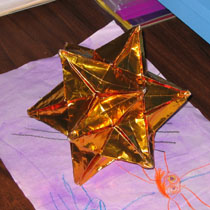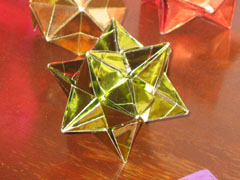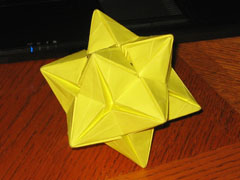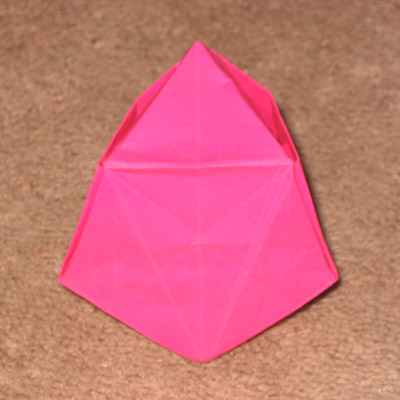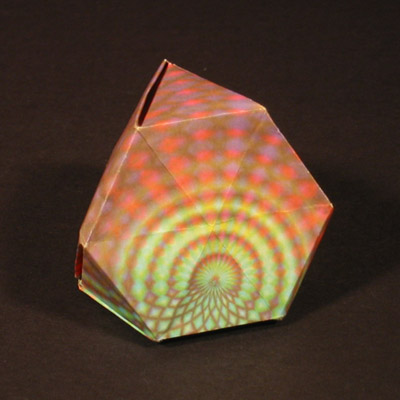One of my all-time favorite shapes has always been the Stellated Dodecahedron. I've designed versions of this shape over time. The first is from a single square. It is very challenging to fold because there are many flaps of extra paper to deal with by the time you get to the end, and the model wants to spring apart. Still, I like the CP because the layout maximizes the root pentagon and underlying square. Vertices of the finished form touch 3 edges of the paper.
Next up is the one folded from a 2:1 rectangle. This one is remarkably efficient in it's use of paper, to the point where I had to set it into a larger area to have paper to do the joining. It's also kind of cool because it has a sort of zigzag layout. Last is a version made from 2 squares, each of which comprise half the finished model. This is much easier to fold because you can reach inside each half as you're making it, and the leftover flaps of paper become tabs that fit into the opposite half, nicely solving the problem of what to do with the leftover bits. At the end, the two halves lock together tightly and securely. The resulting model is quite attractive, because it's much easier not to crush it as you're putting it together.
